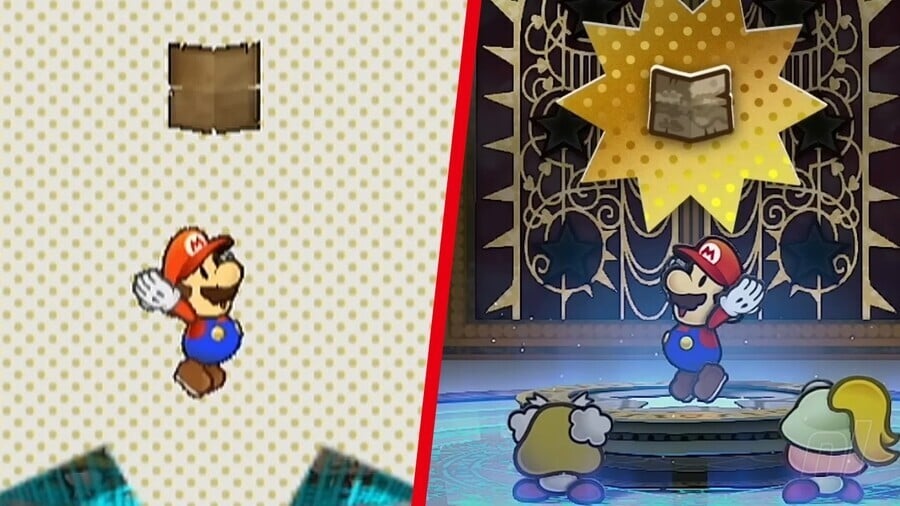
Paper Mario: The Thousand-Year Door was released 20 years ago on GameCube, and now the shiny new Switch remake brings a handful of changes and tweaks to make a cult classic even better.
The list of additions isn't exhaustive, but there's plenty to tuck into if you're revisiting TTYD for the first time since 2004 or if you're a first-timer.
In this guide, we'll have a list of all additions, tweaks, new content, and new features in the Switch remake of Paper Mario: The Thousand-Year Door.
On this page: Paper Mario: The Thousand-Year Door: GameCube Vs. Switch - All Version Differences & New Features
Paper Mario: The Thousand-Year Door: All Version Differences
While this isn't the most exhaustive remake ever, TTYD on Switch still adds plenty of new wrinkles and updates a classic beautifully and visually. Here are all of the differences you can find between both versions.
New visuals
Thousand-Year Door on Switch has had a huge glow-up from the original GameCube release — and that's saying something because the game already looked great.
The visuals have been redone from the ground up, with more detail than ever before. Puddles are more well-defined, battle backdrops have more "props" (like trees, houses, etc.), and the lighting has been improved across the board.
If you want a side-by-side comparison, check out our video below to see how the two games stack up next to each other.
30fps
Something that may be considered a downgrade by some is the lower framerate in the Switch version.
TTYD on GameCube ran at a smooth, consistent 60fps. On Switch, however, that figure has been sliced in half to 30fps. However, it is a consistent 30fps with no frame drops. And any timing-based mechanics have been re-accommodated for the lower frame rate. It's a minor point, in our opinion, and doesn't affect the quality of the game at all.
Rearranged soundtrack
Par the course for remakes, Thousand-Year Door on Switch comes with a completely new soundtrack, with every single song rearranged for the new release.
It goes beyond simply redoing the songs, though. Not only does every song from the original have a new interpretation, but every single area has its own unique arrangement of the standard battle theme, just like in The Origami King. They're fantastic, and it's amazing to pick out the instrumental choices in each version.
Reworked fast travel
Rogueport Sewer's pipe room is back, but it's now much, much easier to use.
The pipe room is used to return to cities visited in previous chapters, without having to go back through the Sewers or use the Excess Express or Balloon, for instance. Originally, the pipe room was split between two different rooms, and you needed to obtain new abilities to reach every single pipe. They also weren't numbered.
Now, on Switch, the pipe room is just a single room with seven different warp pipes, all leading to a particular town/location per chapter. And now, each is numbered and the floor around the pipe matches the location you're going to — so Fahr Outpost, for example, has a snowy patch under the pipe. You also automatically unlock the pipe after holding the treasure map up to the Thousand-Year Door after obtaining that region's Crystal Star.
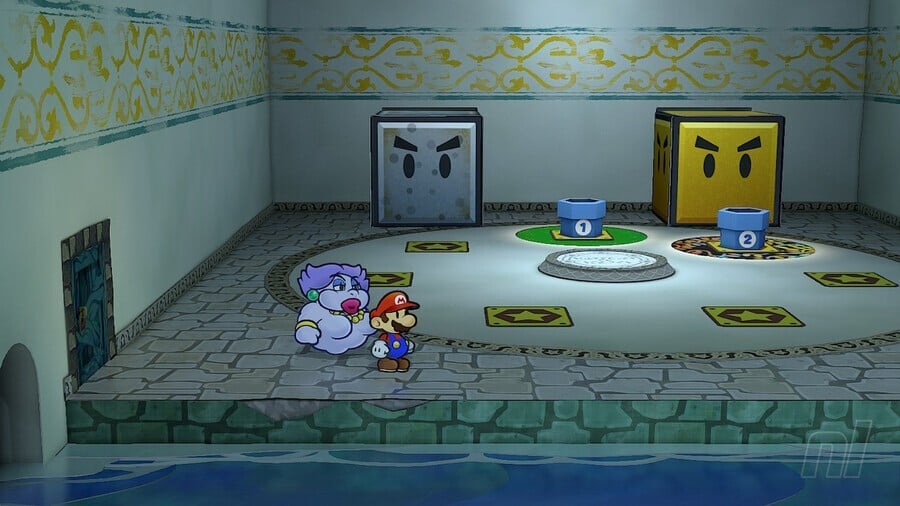
A bigger bag
In Thousand-Year Door, you start off the game with a pretty small inventory — you can only hold 10 items on you at any one time in the original game This has been expanded on in the Switch remake. Now Mario can carry 15 items in his pockets.
You can increase this further in both games by reaching Floor 50 of the Pit of 100 Trials and grabbing the Strange Sack.
You can also still store items in the Storage, available at every item shop in the game. Storage, however, is still limited to 32 items in both versions of the game, and you can't expand that any further.
More coins
Like with your bag, your coin cap has also been increased in TTYD's remake.
On GameCube, you were limited to 999 coins. On the Switch, this has been increased — we've carried almost 2,000 coins and haven't hit the cap yet, so we assume the cap is now 9,999 coins this time around
Changes at the Pianta Parlor
The Pianta Parlor — run by TTYD's equivalent of the Mafia — isn't the most savoury place, but it's home to a few minigames where you can get tokens to buy exclusive, sometimes expensive, items.
In the GameCube version, the Parlor houses two slot machines that Mario can play to earn tokens. In the Switch version, however, these have been swapped out for tile-sliding minigames. These are similar to those found in Super Mario Bros. 3.

New save points & shops
A couple of extra save points have been added to the Switch version of TTYD to ensure you don't lose your progress along the way.
One of the most important ones is at the Pit of 100 Trials, where a save point has been added right outside the entrance. Fantastic if you don't want to trek all the way back to save, or simply want to restart and not walk all the way back.
In terms of shops, Charlieton will now appear during Chapter 2, in Boggly Woods, meaning you don't need to wait to reach the Great Tree before stocking up on healing items.
Keep money when you run away
In the GameCube version, you would lose coins if you chose to run away from an enemy battle. That's been completely removed from the Switch version. Now, if you run away, you don't lose anything! Makes grinding for money in the post-game a lot easier.
Updated localisation
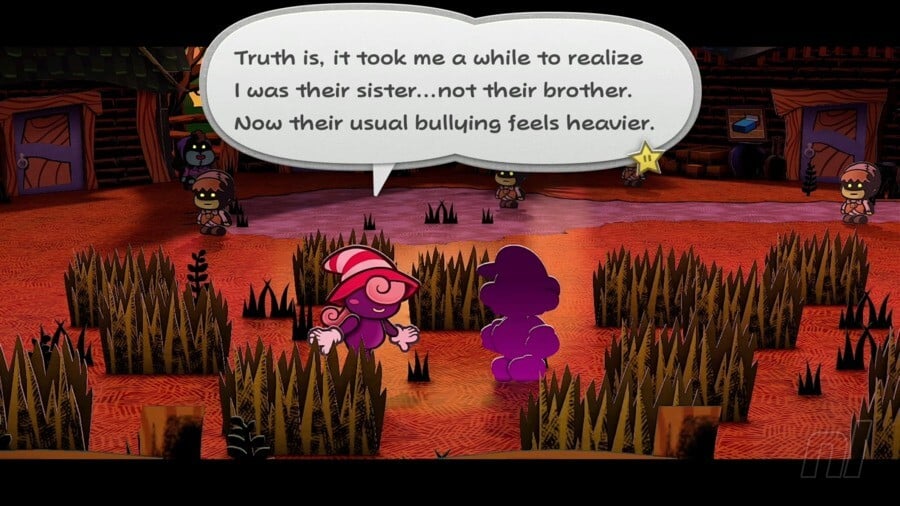
Thousand-Year Door on Switch is much more faithful to the original Japanese script, particularly compared to the original GameCube version.
Multiple things have been tweaked to better match the original game — such as Hooktail being afraid of Frogs, not Crickets, and Vivian being unambiguously transgender, rather than being picked on for her appearance.
Items and quests moved
There are a very small number of instances where items or quests have been moved in TTYD on Switch.
For Trouble Center requests, Mayor Dour's request is now no longer available after completing Chapter 4. Instead, you can only access this request after completing Chapter 7. Why has this been moved? No idea!
Another Trouble Center request has been affected, too. After completing Chapter 6, Frankie will ask you to look for a certain item for him. This ring is in a different location in the Switch version compared to the GameCube version. This is because the Western release of the GameCube version changed the ring's location, so now the Switch has brought it back in-line with the Japanese original.
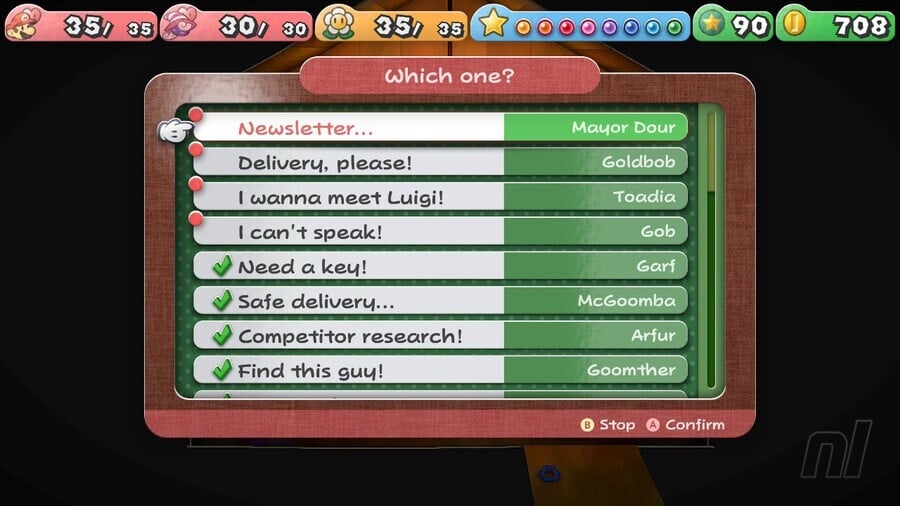
Paper Mario: The Thousand-Year Door - New Features on Switch
The Switch remake doesn't just settle with a few tweaks — there are lots of brand new additions to the game. We've listed these features below.
Battle Master Toad
Battle Master Toad is a brand new NPC introduced in the Switch remake of TTYD. Dressed in a purple tangzhuang coat and guapi mao cap, this Toad will allow you to practice any of your attacks and skills to make sure you can nail those timings. He can be found next to the Rogueport Sewer pipe, as well as in every single town across the game.
Essentially, he functions like the Action Command Dojo (from Color Splash) and Battle Lab (from The Origami King).
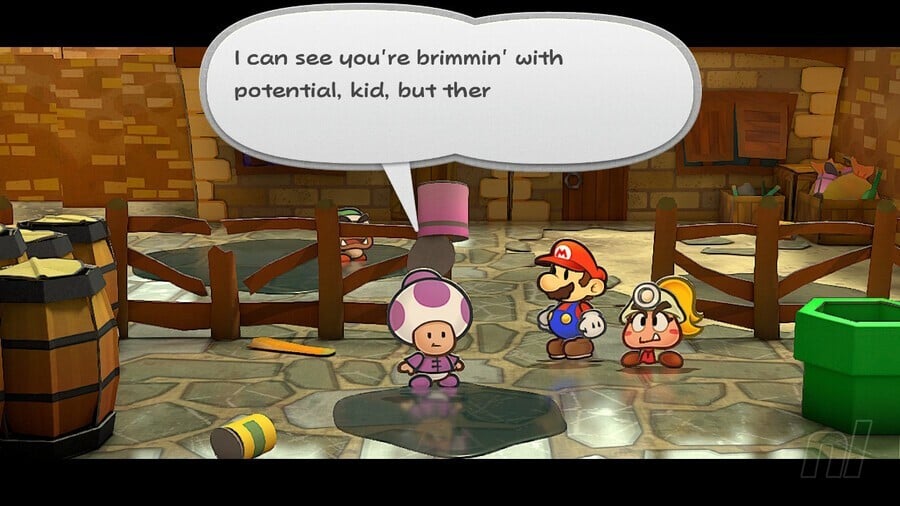
Ian Foomus
Maybe the greatest name ever, Ian Foomus is another new NPC who you'll meet in the Switch remake. Hiding out in the Trouble Center, this mouse will be able to help you with some of those troublesome... troubles.
Partner wheel
Need to swap quickly between Admiral Bobbery, Ms. Mowz, and Yoshi? Well now you can with the brand new Partner Wheel.
While shortcuts mapped to the d-pad were — and still are — a thing, the Partner Wheel makes things even easier. Simply hold down the 'L' button to bring up a wheel of all of your characters, then cycle through them and press 'A' to select who you need.
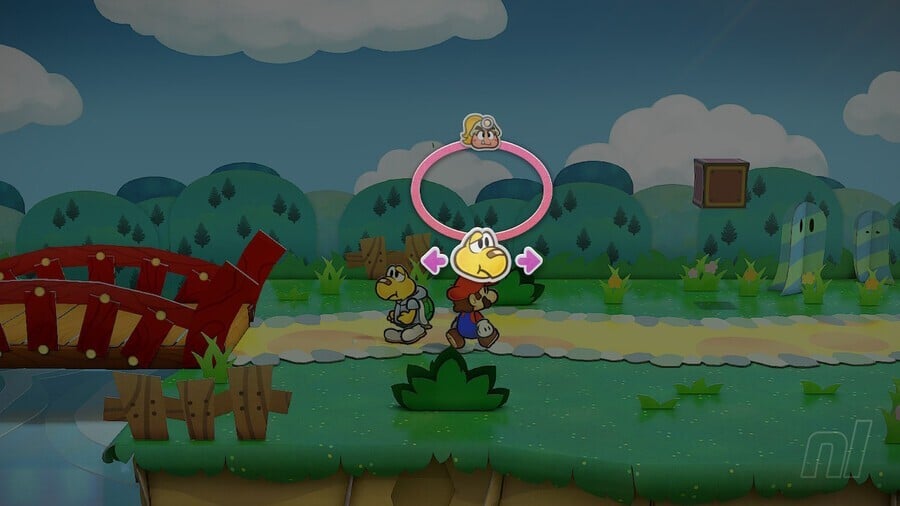
Hint system
Thousand-Year Door isn't always clear on what you need to do, which is why the new Hint System is really helpful. A little tap of the 'ZL' button will bring up one of your companions (usually Goombella) who will give you a little hint on where you need to go, or what you need to look for.
This system is really nice because it doesn't outright tell you, but it's also not obscure enough to prevent you from progressing.
Art Gallery & Sound Gallery
Two new features have been added to the Journal in TTYD on Switch — an Art Gallery and Sound Gallery.
As you progress through the game, you'll unlock music and art that correspond to each chapter of TTYD. It's a lovely little bonus for superfans, and some of that concept art is really fascinating.
New badge
Speaking of sound, there's a new badge you can only get in the Switch version of Thousand-Year Door - the Nostalgic Tunes Badges.
This badge can be bought from the Lovely Howz of Badges in Rogueport, and costs 0 BP to equip. Putting it on lets you swap the new music for the old GameCube soundtrack. Fun! And it looks like a little GameCube too. We need GameCube badges in real life...
New shortcuts
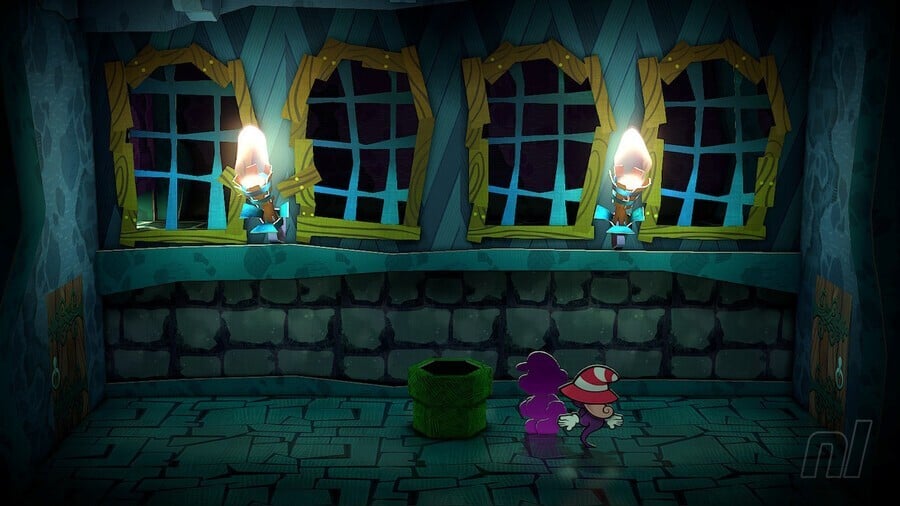
A couple of new shortcuts have been added to the Switch remake of TTYD, and both of these come in clutch at particularly lengthy chapters in the game.
In Chapter 4, once you've discovered the secret behind your captor's identity, you'll unveil a brand new warp pipe in the Creepy Steeple. You will have to go back and forth between the Steeple and Twilight Town a few times, but this prevents you from walking back and forth more times, allowing you to stock up on items before a crucial boss fight. We'll take it.
A second one is in Chapter 5, where a new spring has been added by the cliffs on Keyhaul Key. This helps when you're walking back and forth to save Bobbery and unlock the cave to the Pirate's Grotto.
Retry boss
If at any point you die in Paper Mario: Thousand-Year Door on Switch, you'll have the option to retry 00 either from your last save or "from this scene".
That means, if you die during a fight — particularly a boss fight — then you have the option to reload the game in that room. This even works for the final boss, plus you'll be able to skip any dialogue by pressing the '+' button.
A new recipe
Zess. T's recipe book contains 57 different culinary creations on GameCube. However, on Switch there are 58 recipes — which means one has been added.
We're working our way through the recipes in the remake and will let you know what the new concoction is when we've made it.